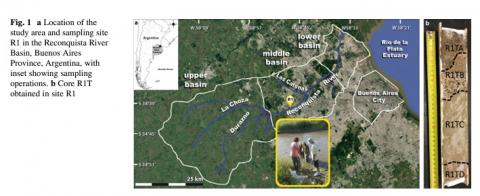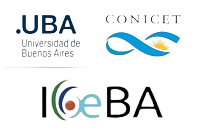Cecilia Gisela Cantera, Ana Elisabeth Tufo, Roberto Adrián Scasso & Maria dos Santos Afonso
2 022
Environmental Geochemistry and Health - 28 May 2021 Volume 44, pages 729–747, (2022)
The mineralogical and geochemical characterization of sediments of the Reconquista River allows analyzing the geochemical partition of trace elements in one of the most polluted water courses of Argentina. The low dissolved oxygen and high ammonia contents, together with the high chemical oxygen demand, attest to the poor water quality. Ammonia, Cd and Cu content in surficial water exceeds the maximum guidelines for freshwater in Argentina. The recent sediments of the uppermost bed are enriched in organic matter (OM), sulfur, Zn, Cu and Pb. The enrichment factor is moderate, and the geoaccumulation index (Igeo) for Cu and Pb indicates uncontaminated to moderately contaminated sediments. The positive and significant correlation between As, Cr, Pb and Zn with the iron content suggests that their retention is controlled by the amount of iron oxy (hydr)oxides in the sediments, probably combined with the silt + clay abundance. In comparison with its tributary, the Las Catonas Stream, the Reconquista River, has less OM and trace elements in the sediments and more dissolved trace elements in the interstitial water. We interpret that OM is the main sorbent of the trace element. In the absence of OM, the iron oxy (hydr)oxides and the silt + clay fraction are a less efficient substitute. Consequently, the interstitial waters of the Reconquista River are enriched in these elements. Therefore, minor changes in the environmental conditions may generate significant release of hazardous trace elements from the sediments to the interstitial water and, in turn, to the surficial water of the river. As most of the big cities and the agricultural activities of Argentina are developed on the loessic substrate, the understanding of its interaction with polluted waters is crucial.

